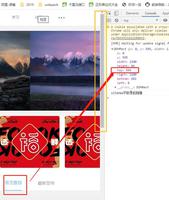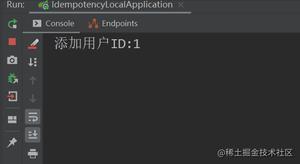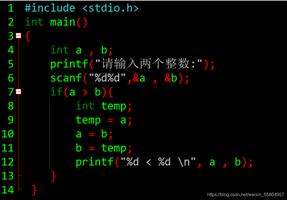C#实现矩阵加法、取负、数乘、乘法的方法
本文实例讲述了C#实现矩阵加法、取负、数乘、乘法的方法。分享给大家供大家参考。具体如下:
1.几个基本函数
1)判断一个二维数组是否为矩阵:如果每行的列数都相等则是矩阵,没有元素的二维数组是矩阵
/// <summary>
/// 判断一个二维数组是否为矩阵
/// </summary>
/// <param name="matrix">二维数组</param>
/// <returns>true:是矩阵 false:不是矩阵</returns>
private static bool isMatrix(double[][] matrix)
{
//空矩阵是矩阵
if (matrix.Length < 1) return true;
//不同行列数如果不相等,则不是矩阵
int count = matrix[0].Length;
for (int i = 1; i < matrix.Length; i++)
{
if (matrix[i].Length != count)
{
return false;
}
}
//各行列数相等,则是矩阵
return true;
}
2)计算一个矩阵的行数和列数:就是计算两个维度的Length属性
/// <summary>
/// 计算一个矩阵的行数和列数
/// </summary>
/// <param name="matrix">矩阵</param>
/// <returns>数组:行数、列数</returns>
private static int[] MatrixCR(double[][] matrix)
{
//接收到的参数不是矩阵则报异常
if (!isMatrix(matrix))
{
throw new Exception("接收到的参数不是矩阵");
}
//空矩阵行数列数都为0
if (!isMatrix(matrix) || matrix.Length == 0)
{
return new int[2] { 0, 0 };
}
return new int[2] { matrix.Length, matrix[0].Length };
}
3)向控制台打印矩阵:注意,如果前后都是两个char类型的量,则运算符+会把前后两个字符转化为整数相加,而不会将前后字符视为字符串连接
/// <summary>
/// 打印矩阵
/// </summary>
/// <param name="matrix">待打印矩阵</param>
private static void PrintMatrix(double[][] matrix)
{
for (int i = 0; i < matrix.Length; i++)
{
for (int j = 0; j < matrix[i].Length; j++)
{
Console.Write(matrix[i][j] + "\t");
//注意不能写为:Console.Write(matrix[i][j] + '\t');
}
Console.WriteLine();
}
}
2.矩阵加法
/// <summary>
/// 矩阵加法
/// </summary>
/// <param name="matrix1">矩阵1</param>
/// <param name="matrix2">矩阵2</param>
/// <returns>和</returns>
private static double[][] MatrixAdd(double[][] matrix1, double[][] matrix2)
{
//矩阵1和矩阵2须为同型矩阵
if (MatrixCR(matrix1)[0] != MatrixCR(matrix2)[0] ||
MatrixCR(matrix1)[1] != MatrixCR(matrix2)[1])
{
throw new Exception("不同型矩阵无法进行加法运算");
}
//生成一个与matrix1同型的空矩阵
double[][] result = new double[matrix1.Length][];
for (int i = 0; i < result.Length; i++)
{
result[i] = new double[matrix1[i].Length];
}
//矩阵加法:把矩阵2各元素值加到矩阵1上,返回矩阵1
for (int i = 0; i < result.Length; i++)
{
for (int j = 0; j < result[i].Length; j++)
{
result[i][j] = matrix1[i][j] + matrix2[i][j];
}
}
return result;
}
3.矩阵取负
/// <summary>
/// 矩阵取负
/// </summary>
/// <param name="matrix">矩阵</param>
/// <returns>负矩阵</returns>
private static double[][] NegtMatrix(double[][] matrix)
{
//合法性检查
if (!isMatrix(matrix))
{
throw new Exception("传入的参数并不是一个矩阵");
}
//参数为空矩阵则返回空矩阵
if (matrix.Length == 0)
{
return new double[][] { };
}
//生成一个与matrix同型的空矩阵
double[][] result = new double[matrix.Length][];
for (int i = 0; i < result.Length; i++)
{
result[i] = new double[matrix[i].Length];
}
//矩阵取负:各元素取相反数
for (int i = 0; i < result.Length; i++)
{
for (int j = 0; j < result[0].Length; j++)
{
result[i][j] = -matrix[i][j];
}
}
return result;
}
4.矩阵数乘
/// <summary>
/// 矩阵数乘
/// </summary>
/// <param name="matrix">矩阵</param>
/// <param name="num">常数</param>
/// <returns>积</returns>
private static double[][] MatrixMult(double[][] matrix, double num)
{
//合法性检查
if (!isMatrix(matrix))
{
throw new Exception("传入的参数并不是一个矩阵");
}
//参数为空矩阵则返回空矩阵
if (matrix.Length == 0)
{
return new double[][] { };
}
//生成一个与matrix同型的空矩阵
double[][] result = new double[matrix.Length][];
for (int i = 0; i < result.Length; i++)
{
result[i] = new double[matrix[i].Length];
}
//矩阵数乘:用常数依次乘以矩阵各元素
for (int i = 0; i < result.Length; i++)
{
for (int j = 0; j < result[0].Length; j++)
{
result[i][j] = matrix[i][j] * num;
}
}
return result;
}
5.矩阵乘法
/// <summary>
/// 矩阵乘法
/// </summary>
/// <param name="matrix1">矩阵1</param>
/// <param name="matrix2">矩阵2</param>
/// <returns>积</returns>
private static double[][] MatrixMult(double[][] matrix1, double[][] matrix2)
{
//合法性检查
if (MatrixCR(matrix1)[1] != MatrixCR(matrix2)[0])
{
throw new Exception("matrix1 的列数与 matrix2 的行数不想等");
}
//矩阵中没有元素的情况
if (matrix1.Length == 0 || matrix2.Length == 0)
{
return new double[][] { };
}
//matrix1是m*n矩阵,matrix2是n*p矩阵,则result是m*p矩阵
int m = matrix1.Length, n = matrix2.Length, p = matrix2[0].Length;
double[][] result = new double[m][];
for (int i = 0; i < result.Length; i++)
{
result[i] = new double[p];
}
//矩阵乘法:c[i,j]=Sigma(k=1→n,a[i,k]*b[k,j])
for (int i = 0; i < m; i++)
{
for (int j = 0; j < p; j++)
{
//对乘加法则
for (int k = 0; k < n; k++)
{
result[i][j] += (matrix1[i][k] * matrix2[k][j]);
}
}
}
return result;
}
6.函数调用示例
1)Main函数代码
static void Main(string[] args)
{
//示例矩阵
double[][] matrix1 = new double[][]
{
new double[] { 1, 2, 3 },
new double[] { 4, 5, 6 },
new double[] { 7, 8, 9 }
};
double[][] matrix2 = new double[][]
{
new double[] { 2, 3, 4 },
new double[] { 5, 6, 7 },
new double[] { 8, 9, 10 }
};
//矩阵加法
PrintMatrix(MatrixAdd(matrix1, matrix2));
Console.WriteLine();
//矩阵取负
PrintMatrix(NegtMatrix(matrix1));
Console.WriteLine();
//矩阵数乘
PrintMatrix(MatrixMult(matrix1, 3));
Console.WriteLine();
//矩阵乘法
PrintMatrix(MatrixMult(
new double[][] {
new double[]{ 4, -1, 2 },
new double[]{ 1, 1, 0 },
new double[]{ 0, 3, 1 }},
new double[][] {
new double[]{ 1, 2 },
new double[]{ 0, 1 },
new double[]{ 3, 0 }}));
Console.WriteLine();
Console.ReadLine();
}
2)示例运行结果
希望本文所述对大家的C#程序设计有所帮助。
以上是 C#实现矩阵加法、取负、数乘、乘法的方法 的全部内容, 来源链接: utcz.com/z/346924.html








